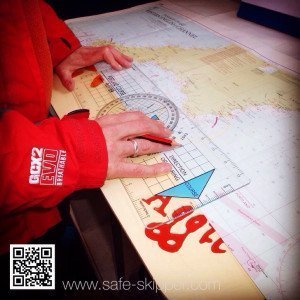Passage planning helps you to:
• Decide where to go
• Calculate how long it will take to get there
• Avoid bad weather
• Take advantage of favourable tides
• Be aware of possible hazards, eg shipping lanes, tidal overfalls
• Decide a watch system
• Decide if the crew is experienced enough for the trip
• Be prepared to react in case of emergency
A well prepared passage plan can make the difference between a safe, trouble-free trip, or an experience that could prove unenjoyable and possibly hazardous.
When planning a passage, small scale charts are used to create an overall strategy. This helps the skipper and crew consider such factors as the most efficient route, alternate routes and possible ports of refuge in case of emergency. Large scale charts are needed for destinations and hazardous areas of the route.
If going outside your country’s territorial waters, make sure you have original documents on board including ship’s log, registration certificate, insurance, radio licence, International Certificate of Competence and courtesy flags for your destination.
Tips
• Carry large and small scale paper charts in addition to electronic navigation aids
• Carry pilot books that provide harbour information and passage notes for your cruising area
• Study the tidal heights and streams and make notes to cover the whole trip. • Check on customs regulations if applicable
• Check you have all necessary documents
Contingency Plan
Before going to sea, make a contingency plan in case conditions deteriorate unexpectedly or there is a problem with your vessel or a crew member is injured.
Ensure you could navigate safely to places of refuge without the need for electronic aids, in case of power failure.
Make a note of the tidal predictions at the emergency destination, to be sure of accessibility.
Information Ashore
Make sure someone ashore knows of your plans and how to raise the alarm if they become concerned for your well being.
(taken from the Safe Skipper app for iPhone, iPad & Android)









